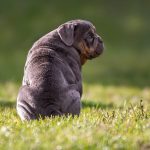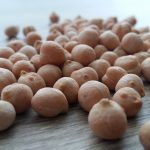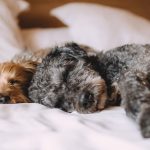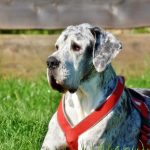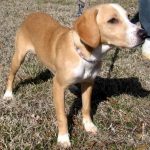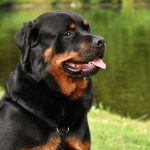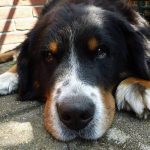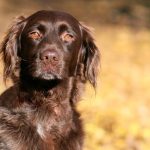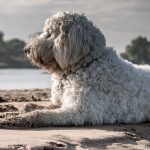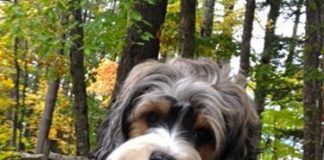
Color is a complex issue in the English bulldog breed. We see this dog in a variety of textures and colors, from fallow and fawn to brindle and red.
But what about the blue color? If you have already researched about English bulldogs, you might have come across this unique coloring. Find out how this dog differs from the other colors.
Origin
A dog’s coat color is something a breeder cannot easily control, so it’s safe to say that it all happens because of genetics. Blue is identified as a diluted color, which happens when there is mutation in a dog’s genes. Mutation causes melanin-containing cells to distribute inappropriately.
In order to come up with a dog having a diluted coat color, the English bulldog needs to have two copies of the D-locus. When genetically tested, the result shows they have a “d/d” gene which pertains to the blue color. Dogs with double copies of the recessive “d” will always pass it on to their offspring.
Blue is regarded as a diluted variation of black. As you might know by now, black is a non-standard color in the English bulldog breedbased on breed standards set by the American Kennel Club. As per AKC, the only accepted colors are red, fawn, and brindle. Smut or a whole color that comes with a black mask is also recognized by the club.
Appearance
The Blue bulldog has the same muscular and strong body as any English bulldog. It should not be mistaken for the Alapaha Blue Blood bulldog which is a separate breed that comes in many coat colors and textures. As the name implies, this rare breed was first bred in Alapaha, Georgia and is one of the types of bulldogs that became first popular during the early 80s.
Blue bulldogs are preferred by pet parents who are seeking rare coat colors because it is not as common as other colors like fawn and brindle. Black itself is considered rare since this is a non-standard color. Like the blue ones, these dogs usually come with a higher price tag. They cost twice as much as the standard colors of bulldogs.
English bulldogs are known for their well-built bodies and wrinkled faces and that also applies to blue bulldogs. A male weighs around 54 pounds while a female is a bit smaller at 50 pounds when full-grown. The desirable weight should not be more than 55 pounds for both dogs and bitches. They both stand 17 inches and 16 inches respectively.
Like the rest of other English bulldog colors, the blue bulldog has a smooth but loose skin and its face comes with thick folds. The folds require daily cleaning using wet wipes or a soft cloth. It has a short fine coat that is easy to groom. Brushing should be done three to four times a week to keep their coat healthy and shiny.
Blue Variations
Blue fawn – it is believed that this color does not have the “dd” gene but the dogs still appear to be blue because of their slate gray color. If you look closely at the lines in their eyes, their pads, and their nose, you will also see a blue pigmentation. They are the most popular among all variations of the blue English bulldogs.
Tri-colored blue – the term Tri is something breeders use to describe English bulldogs having the three color combinations. In the case of blue tris, they tend to have diluted black spots combined with chocolate and white. Chocolate is simply another term for brown, which you will notice on the front areas of the leg. These dogs only have a small patch of white which you will see on the face and neck area.
Blue and tan – bulldogs with this color display tan spots on the front areas of the leg, ears, and a bit on the face. In these dogs, the dominant color is blue or diluted black. There are also black and tan English bulldogs, which are just the darker versions of these dogs. Tan is often mistaken for fawn but it’s actually a darker version of the latter. English bulldogs with a blue and tan color are not as common as the blue fawn color.
Blue seal – the seal color is pretty obvious on the undercoat mostly when exposed in sunlight. Those carrying the seal gene are quite rare because they are carrying a maroon-like undertone. Due to their rarity, they are priced higher than other variations of blue pugs. This type of bulldog does not look shiny when placed against a black object unlike the ones in lilac color, another exotic color in the English bulldog breed.
Personality
There are a number of studies associating color and dog personality. It is believed that black dogs are more aggressive than those with other coat colors. This has not yet been proven so it’s safe to say that this is only a myth and not a fact. It still boils down to how a dog was raised because environment plays a big role in an animal’s development.
To say that a black dog will always be more aggressive than fawn or other colors does not always apply since dogs are individuals just like humans. They have different sets of personalities and their environment plays a big role on how they get along with people and other pets. English bulldogs may share many similar traits, though.
In general, English bulldogs are known for their gentle and affectionate nature. These dogs only look fierce due to their slanted eyes and powerful jaws but they are far from being aggressive, contrary to what some people think about them. When raised properly and exposed to new people and places at an early age, these dogs grow up to be gentle and loving towards humans and pets.
Genetic Testing for Blue bulldogs
The best way to determine if your English bulldog is a “true blue” or possessing the diluted black is to undergo DNA testing. Tests are available for any breed and can be done at any age. All you need to do is submit samples like your pet’s swab, blood, or dewclaw. Simply check the guidelines on the website of an animal testing center.
If your English bulldog is still nursing and is under six weeks old, the recommended types of samples to send are blood sample and dewclaw. It’s not advisable to submit cheek swabs because the DNA in the mother dog’s milk can affect the results of the examination. For blood samples, animal testing centers recommend placing it on cotton buds.
You can collect a blood sample from the end of your English bulldog’s clipped toenail. Simply cut the nail to cause a little blood for collection. Let the blood become dry completely before putting the cotton budin a paper or plastic bag complete with your important details.
Removing dewclaws is easy to do while your pet is still a pup. Dewclaws refer to claws that look like small toes with a nail. They grows slightly up the leg and above the paw. If you choose to send dewclaws, place them in a paper envelope instead of a vial or plastic bag. This is to prevent the sample from decomposing while shipping.
Due to advancements in technology, it’s now possible to get your pet tested regardless of the distance to the testing center. If it is overseas, you only have to send samples and wait for around five days maximum for the result. You can see those results online because the animal testing centers will send them to you through email.
Canine coat color testing is not as expensive as other types of genetic tests being done on dogs. In the United States, the average cost per test is around $40 plus the shipping cost of the samples. The shipping rates will depend on where you are in the world and your distance from your chosen animal testing center.
Blue bulldog Health
All English bulldogs are subject to a short lifespan due to a long list of health concerns. They only get to live around eight years on average, althoughsome have lived 10 years or more with proper care. Regardless of your English bulldog’s coat color, here are some health concerns you need to keep an eye on:
Respiratory problems – the number one reason why these dogs find it difficult to survive for longis because they are more susceptible to respiratory ailments more than any other breed. Many English bulldogs suffer from breathing difficulties because of their brachycephalic nature or having a flat face. When a dog has this problem, he will always seem to be coughing dryly and will even act like choking. These symptoms have something to do with the convoluted tissues in your English bulldog’s throat and nose. It is helpful to limit your pet’s physical activities because strenuous activities and even long walks can cause heavy breathing.
Dermatitis – Because of its short coat, the English bulldog is prone to certain skin-related problems like dryness, flaking, and lesions. There are many possible causes of canine skin infection so it is important to undergo diagnosis before giving your dog any treatment. If it’s because of food, your vet will first carry out a food elimination diet to confirm it. If it’s due to bacteria, your vet will prescribe topical antibacterial medications to apply twice or thrice a day. Vets normally recommend omega-3 or omega-6 supplements for dogs prone to skin problems.
Eczema – this is another skin-related problem often seen in the English bulldog breed. Also called canine atopic dermatitis, this condition refers to infections not caused by parasites but causes skin dryness. The leading symptoms of canine eczema are redness, intense itching, and hot spots. Because of the uncontrolled itching, dogs with eczema end up licking and scratching parts of their body. As with skin infections, there are many possible causes to eczema, including allergy to foods and deficiency to certain vitamins.
Hip dysplasia – one of the noticeable things about English bulldogs is their unproportioned body. They have narrow hips and broad shoulders but they have short legs. This makes them more susceptible to joint problems, particularly hip dysplasia. This condition happens when there is an abnormality in the structure of the joint and the connective muscles. This is why it is important to decrease a bulldog’s physical activity because strenuous activities can tire it out easily.
Eye irritation – the folds in an English bulldog’s skin are almost covering their eyes. The English bulldog’s eyes in normal conditions should not have a yellow tint. In able to avoid infections that can spread to the eye, it is important to clean your pet’s tear stains two to three times a week. Do this by putting sterile wash on cotton balls and using it to clean the eye area. If your pup’s eye has an unusual discharge that emits a peculiar odor, talk to your vet about it before putting any solution.
Blue bulldog for Sale
Blue English bulldogs are pricier than other coat colors of the breed. This is due to the fact that they are considered to be rare. If you are going to check breeders online, you will see available pups sold at around $8,000 and moreeach. The black ones are less expensive compared to the diluted types, because they cost anywhere between $3,000- $4,000 depending on pedigree.
Conclusion
The blue bulldogs you see online are simply black English bulldogs sporting a diluted coat color. This is one of the rare or exotic coat colors in the breed since the only accepted colors for them are very limited. Some standard colors are fawn, fallow, brindle, and red. There is no such thing as a blue gene because there’s only a black gene in dogs.






